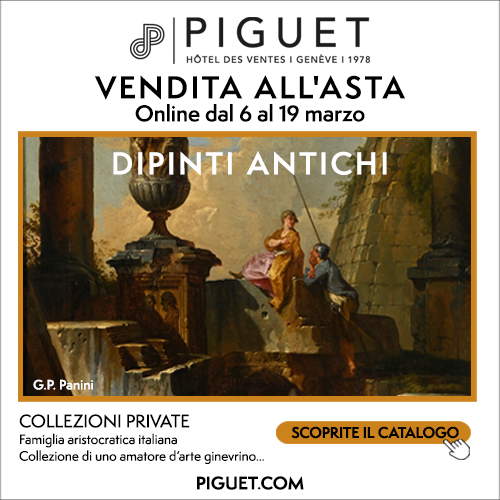Farewell to Antonio Paolucci, art historian, former minister of cultural heritage
Art historian Antonio Paolucci has died in Florence. He had been minister of cultural heritage during the Dini government, director of the Vatican Museums and superintendent of the Polo Museale di Firenze. Born in Rimini on Sept. 19, 1939, the son of an antiquarian, he graduated from the University of Florence in 1964 (he was a student of Roberto Longhi) and entered the administration of cultural heritage in 1968. Before joining the state ranks, he had worked for a few years as a middle school art history teacher in Signa, Italy, since 1963. An experience, the latter, that he would consider crucial to his career.
His first museum job was at the Bargello National Museum where he stayed for a year, from 1968 to 1969, and then moved to the Venice Superintendency where he stayed until 1980. He then moved to the Superintendence of Mantua, Brescia and Cremona and in 1988 returned to Tuscany. Before becoming director of the Vatican Museums he held, for some 20 years, the position of superintendent of the Polo Museale Fiorentino: all the state museums in Florence, such as the Uffizi, Palazzo Pitti, the Boboli Gardens, and the Bargello Museum, were under his responsibility. Also from January 1995 to May 1996 was his experience as minister of culture in the technical government of Lamberto Dini, and shortly after, in 1997, the appointment as extraordinary commissioner for the restoration of the Basilica of St. Francis after the earthquake that struck Assisi on Sept. 26, 1997.
In 2007, Pope Benedict XVI appointed Antonio Paolucci as director of the Vatican Museums: under his tenure, museum visitors experienced an increase from 4.3 million in 2007 to more than 6 million in 2015. Among his measures was the improvement of the Sistine Chapel’s climate control system, completed in 2014 to replace the air conditioning system that had been installed in 1993 and was envisioned for a maximum of 700 visitors at once (the current one is instead calibrated for 2,000 visitors). His time at the Vatican Museums lasted ten years, until 2017, after which Paolucci retired, replaced by Barbara Jatta.
His work includes several monographs, especially on the Renaissance and artists such as Piero della Francesca, Luca Signorelli, Antoniazzo Romano, Michelangelo, Filippo Lippi, Bronzino, Cellini, and Giambologna, as well as curating numerous exhibitions.
“Italy,” says Minister Gennaro Sangiuliano, “loses a passionate and rigorous man of culture, a tireless scholar who dedicated his life to the protection, promotion and enhancement of our artistic and cultural heritage.”
“The passing of Antonio Paolucci,” says Eike Schmidt, former director of the Uffizi and current director of the Capodimonte Museum and Real Bosco, “creates a great void in the world of culture. A profound connoisseur of art history, a world-renowned museologist, he was striking for the crystalline clarity of his thinking. This was the key to his ability to communicate lofty thoughts and complex concepts to everyone, making them accessible. And of the great humanity with which he was able to guide and inspire colleagues in their work, including me. It was an honor for me to always be able to count on his advice and example.”
“Tonight he left us a statesman and one of the most significant Italian scholars of recent decades, with unparalleled gifts of eloquence and writing and a natural talent for spreading knowledge,” says instead the current director of the Uffizi, Simone Verde. “Not only that: Antonio Paolucci possessed the ability to govern art and its world, to superintend its delicate balances. As minister and head of the Florentine Cultural Heritage, he was the guide, for many years, of the system of protection, so his passing is an unbridgeable loss. The Uffizi Galleries, which have many employees who grew up in his shadow, extend their condolences to his family. In his honor, the museum’s Auditorium where he so often charmed people with his words will bear his name, while his intellectual legacy will be a scientific inspiration.”
 |
| Farewell to Antonio Paolucci, art historian, former minister of cultural heritage |
Warning: the translation into English of the original Italian article was created using automatic tools. We undertake to review all articles, but we do not guarantee the total absence of inaccuracies in the translation due to the program. You can find the original by clicking on the ITA button. If you find any mistake,please contact us.





























